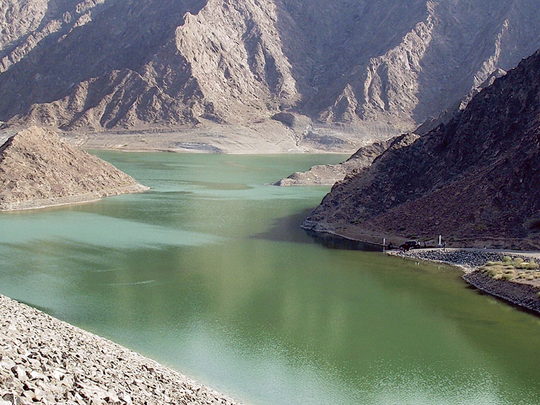
Dubai: The UAE has enhanced its amount of rainfall through cloud seeding but the challenge is to get this rainwater to replenish water tables in the country as a whole, officials said.
Rain-deficient UAE has been using cloud seeding — the infusion of salt crystals into clouds to induce or enhance rain — since 2001. This is to address the country’s annual average rainfall of less than 100mm or almost four inches.
Although the country started using cloud seeding in the 1990s, the National Centre of Meteorology and Seismology (NCMS) only began doing it scientifically in 2001. But challenges remain, weathermen said on Wednesday.
“One challenge is to make sure that we are benefiting from such rainwater since we are increasing it. If this goes back to the sea then we are not doing anything,” Omar Ahmad Al Yazeedi, Director of Research, Development and Training Department at NCMS, told Gulf News during the WeatherTech GCC conference on Wednesday.
“[We have recommended solutions] for each catchment area (wadis), whether to build artificial aquifers or whether to build more wells that collect water instead of letting the water travel long distances, catching dust and pollutants,” Al Yazeedi said.
A good amount of rainfall in non-arid climates recharge groundwater tables or fill dams. But, in the UAE, the evaporation rate of surface water is high and catchment areas have different surface characteristics that make water penetration a challenge. Replenishing UAE’s groundwater is important as it is estimated to run dry by 2030 according to a report by UAE University.
Al Yazeedi said the centre is collaborating with different environmental agencies for solutions to minimise surface run-off of water and evaporation. This year, NCMS has intensified its cloud seeding operations since the end of July, cloud seeding expert and senior forecaster at NCMS Sufian Farrah said.
The country then witnessed different intensities of rain over its northern and eastern part. According to recently released figures from the Ministry of Environment and Water, the total estimated amount of rainwater collected in the Shoka Valley dam, Al Qushaish Valley dam, and Al Kassa dam was around 390,000 cubic metres, equivalent to 86 million gallons, in July.
Currently, there is no technology to verify whether the actual rainfall is due to the cloud seeding operations only, but NCMS’ studies show that there is a strong correlation.
In 2009, for example, the country experienced heavy rain for three days during which cloud seeding operations were intensified. The amount of water collection in dams was equal to nine years’ water output of one UAE desalination plant, Al Yazeedi said.
With the World Meteorological Organisation (WMO) forecasting that intensifying El Nino conditions may bring heavy and more frequent rainfall over the Arabian Peninsula this winter and in spring next year, Farrah said this only means one thing: their cloud seeding operations will also increase to maximise the potential of every rain cloud that forms in the UAE.









